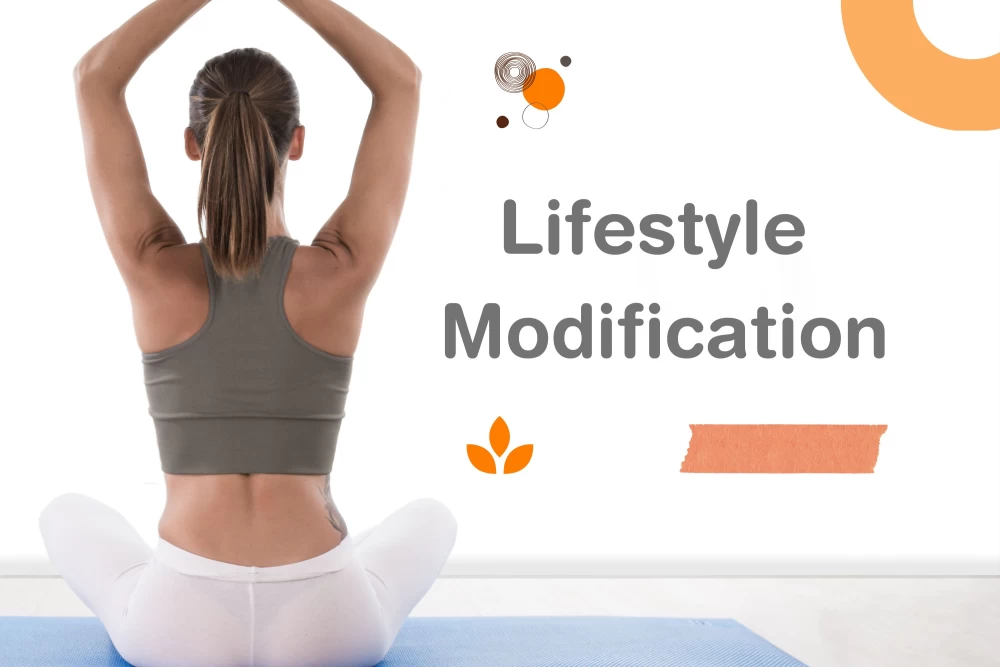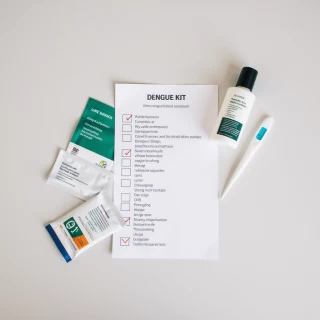
- 24th June 2023
Table of Contents
Understand Lifestyle Modification
I. Contextualization
A. Importance of lifestyle modification
elucidate the positive effects that doing so can have on one's health and well-being.
Disease prevention, increased energy, better mental health, and a higher quality of life are just some of the potential advantages to be discussed.
Promote health and longevity over the long term by stressing the importance of adopting a healthier way of life.
B. Purpose of the lifestyle modification program
- Emphasize the program's stress management, sleep hygiene, healthy eating, exercise, and behaviour modification components.
The program's goal is to help people become active participants in their own health care and to encourage them to make positive changes to their daily habits.
2. Analyzing and Judging
A. As a first step, you should assess the health of your participants by asking them detailed questions about their physical and mental well-being.
Include the patient's medical history, the results of any physical examinations, and any other tests or screenings that were performed as part of the evaluation.
- Make it clear that the purpose of the evaluation is to establish a starting point from which improvement can be measured.
B. Understanding personal aspirations and driving forces: Stress the role that one's own desires and ambitions play in influencing their behaviour change efforts.
- Motivate people to think about what they want out of the experience and to state clearly what it is they hope to accomplish by making changes to their way of life.
- Talk about how boosting motivation and dedication requires setting objectives that are in line with the participants' values and priorities.
C. Assessment of Typical Daily Activities:
Help people take stock of their current approaches to things like eating, exercising, dealing with stress, getting enough shut-eye, and caring for themselves.
Help people take stock of their accomplishments and identify places for growth.
Assist individuals in pinpointing the causes of their unhealthy behaviour and the barriers to change.
3. Objectives, Third Stage
A. Setting Goals That Can Be Achieved: - Stress the significance of establishing goals that can be attained.
In order to achieve larger goals, participants should be prompted to divide them into more manageable chunks.
Goals are more likely to be successful if they are "SMART" (specific, measurable, achievable, relevant, and time-bound) and discussed.
B. Prioritizing areas for lifestyle modification: - Assist individuals in determining which aspects of their lifestyle would most profit from change.
- Set priorities in light of their health evaluation, personal objectives, and potential effects on their well-being as a whole.
To improve the chances of success, suggest that participants zero in on just a few areas to begin with.
C. Discussing the value of setting both short-term and long-term objectives in order to chart a course for success.
- Both setting and achieving short-term goals and long-term ones are important for making positive changes to one's way of life.
4. Nutritional Adjustments
A. Teaching people how to eat well and maintain a healthy weight:
- Explain the basics of healthy eating, such as the value of carbohydrates, proteins, and fats, as well as the role of vitamins, minerals, and water.
- Talk about the importance of moderation and eating whole, unprocessed foods.
B. Advice on meal preparation and portion control: Help people develop eating routines that are tailored to their specific needs and goals.
Teaching people how to limit their intake will help them eat healthily and avoid weight gain.
Encourage the consumption of nutrient-dense foods such as whole grains, fruits, vegetables, and lean proteins.
- Describe the health advantages of eating whole foods like fruits, vegetables, whole grains, and lean proteins.
D. Keeping processed foods, added sugars, and unhealthy fats to a minimum: - Inform participants of the potential dangers of eating too much of these types of foods.
fats. - Offer substitutes and healthier options for participants to use in place of processed foods in their diets.
5. Integration of Exercise and Sport
A. Workout programmes designed specifically for each client:
- Motivate people to pick physical activities that they will stick with because they are fun and fit their interests and skills.
Assist individuals in developing individualized physical activity programmes that address their specific needs in terms of cardiovascular health, strength, flexibility, and overall fitness.
B. Recommendations for Different Types of Exercises: Cardiovascular, Strength, and Flexibility
To that end, please explain the advantages of various forms of exercise.
- Provide recommendations for how often, how long, and how intensely to exercise to achieve the desired outcomes.
C. Establishing a consistent exercise schedule: - Define the value of regularity in this regard.
- Give advice on how to get moving even when time or motivation are an issue.
D. Encouraging Daily Physical Activity: - Encourage the Incorporation of Exercise Into Everyday Activities.
Advise taking the stairs instead of the lift and getting in some quick exercise on your breaks.
6. Stress Reduction Methods, Section
A. Stress and health education: talk about the physical and mental toll that stress takes on the body and mind.
Facilitate the identification of stress symptoms and the participant's comprehension of its potential effects on health.
B. Instructing calming practises like meditation, yoga, and breathing exercises
- Teach people how to manage stress in their daily lives by introducing them to a variety of methods.
Offer instruction in relaxing activities like meditation and deep breathing.
C. Building in regular time for relaxation:
Participants should be encouraged to take part in activities that help them unwind, like yoga, tai chi, or their favourite pastimes.
Stress the significance of self-care measures such as resting, having fun, and being grateful.
D. Promoting Healthful Coping Strategies and Productive Releases of Tension: - Talk about the significance of developing effective strategies for dealing with stress.
- Give them ideas for constructive ways to unwind, like doing something creative, going outside, or talking to a trusted friend or family member.
7. Enhancing Good Sleep Habits
Promoting good sleep hygiene through instruction:
Stress the importance of sleep to your health and well-being.
Think about the effects of sleep deprivation on your body and mind, such as feeling tired during the day and having trouble concentrating at work.
B. Creating a regular sleep and wake time: - Suggest that participants create a consistent sleep and wake time in order to normalize their internal body clock. Talk about how much time you should be spending in bed according to your age.
C. Sleep-friendly environments.
- Talk about how turning off electronics an hour or two before bedtime can help you sleep better.
D. Endorsing activities that ease tension before bedtime: Recommend activities like reading, listening to soothing music, or soaking in a warm bath.
E. Reducing electronic device use in the hours before bed: - Make people aware of the detrimental effects of electronics on sleep.
Help them set a "digital curfew" by limiting screen time in the hours leading up to bedtime.
8. Strategies for Changing Behaviour
A. Identifying and removing obstacles to making lifestyle changes:
Facilitate the identification of potential difficulties encountered by participants.
Provide methods for overcoming challenges, such as learning to prioritize, dealing with stress, or locating a supportive community.
B. Learning How to Overcome Challenges and Keep Motivated:
Give people the resources they need to tackle difficult problems and make tough choices.
- Inspire people to be kind to themselves and strong throughout their experience.
C. Keeping track of and celebrating accomplishments: - Talk about how tracking progress can help you stay motivated.
Make available tools for participants to keep track of their routines, like journals, apps, and wearables.
Drive home the importance of acknowledging and rewarding progress at each stage.
D. Constantly checking in with participants and holding them accountable: Make available resources like support groups, health professionals, and online communities for people to turn to when they need help.
Make sure they are held accountable by scheduling regular follow-up meetings or coaching calls.
9. Integration and Upkeep
Assist programme participants in making the change from short-term participation to long-term adherence to healthy lifestyle practises.
To ensure long-term success, it is important to encourage the incorporation of newly-learned Behaviour into everyday activities.
B. Keeping a close eye on and making necessary changes to one's routines and habits: - Stress the value of regular introspection and evaluation.
It's important to remind people to make adjustments to their lifestyle and goals as they go along.
C. Using positive reinforcement and self-care techniques to reinforce healthy habits:
Talk about how self-love and self-care are crucial to your well-being.
Motivate people to reward themselves for positive behaviour and to take part in activities that contribute to their health and happiness.
D. Supplying materials and methods for continued progress: Provide participants with printed materials, links to relevant websites, or suggested readings to help them along their path.
- Help them locate local fitness center's, nutritionists, and mental health specialists by providing referrals.
Final Thoughts
A. A review of the behavioral change strategy:
Please provide a brief overview of the program's central ideas and techniques.
Show people what they can accomplish and how far they can get by making some changes to their way of life.
B. Stressing the importance of adopting a healthier lifestyle for optimal health:
Reinforce the beneficial effects of lifestyle changes on health, happiness, and longevity.
Reduced risk of chronic diseases and increased longevity are two potential long-term benefits worth discussing.
C. Motivating participants to keep moving forward on their path to a healthier lifestyle: - Motivate participants to keep up their dedication to healthy habits and to keep pushing themselves to improve.
Give people the tools they need to make lasting changes in their lifestyles.














